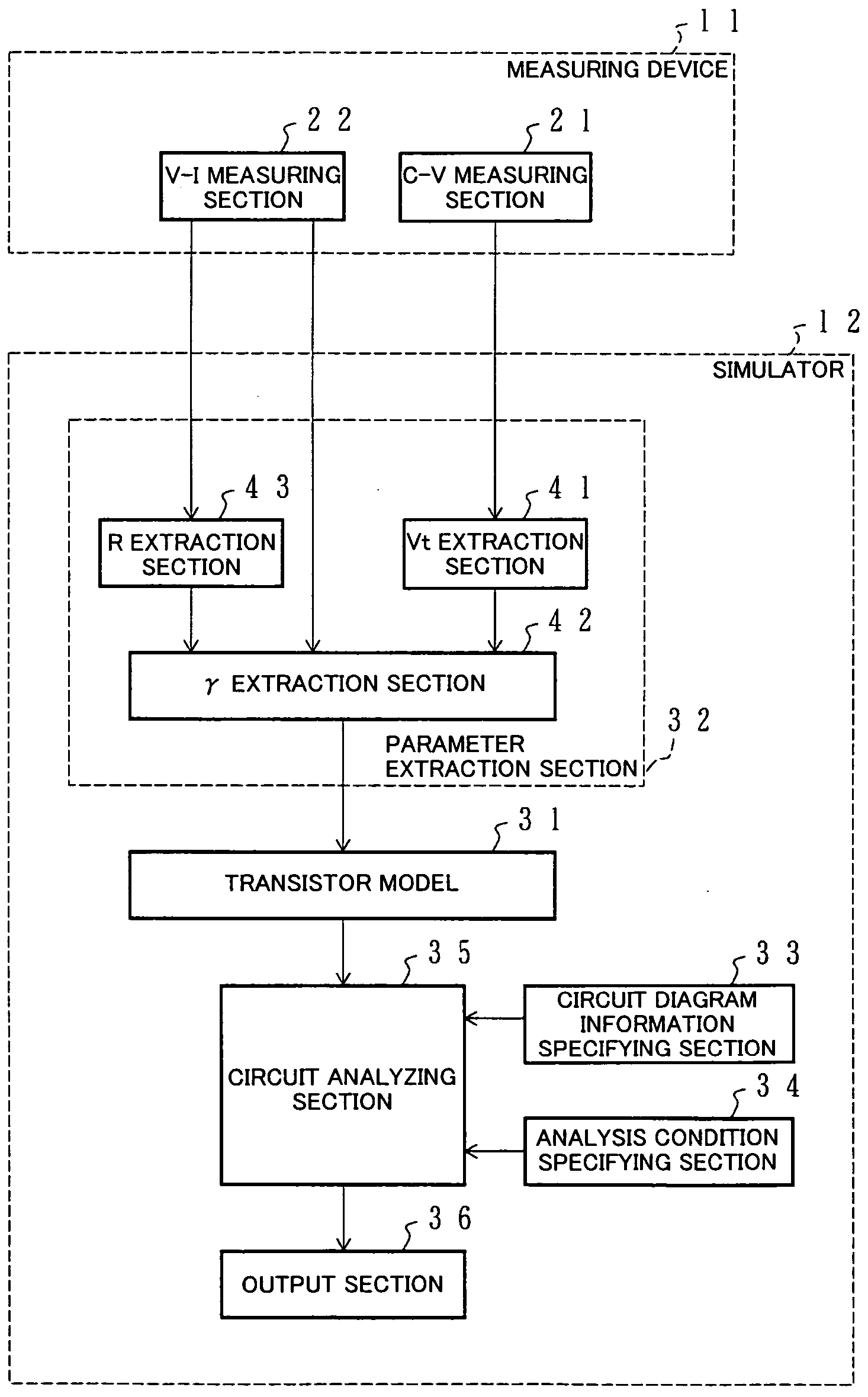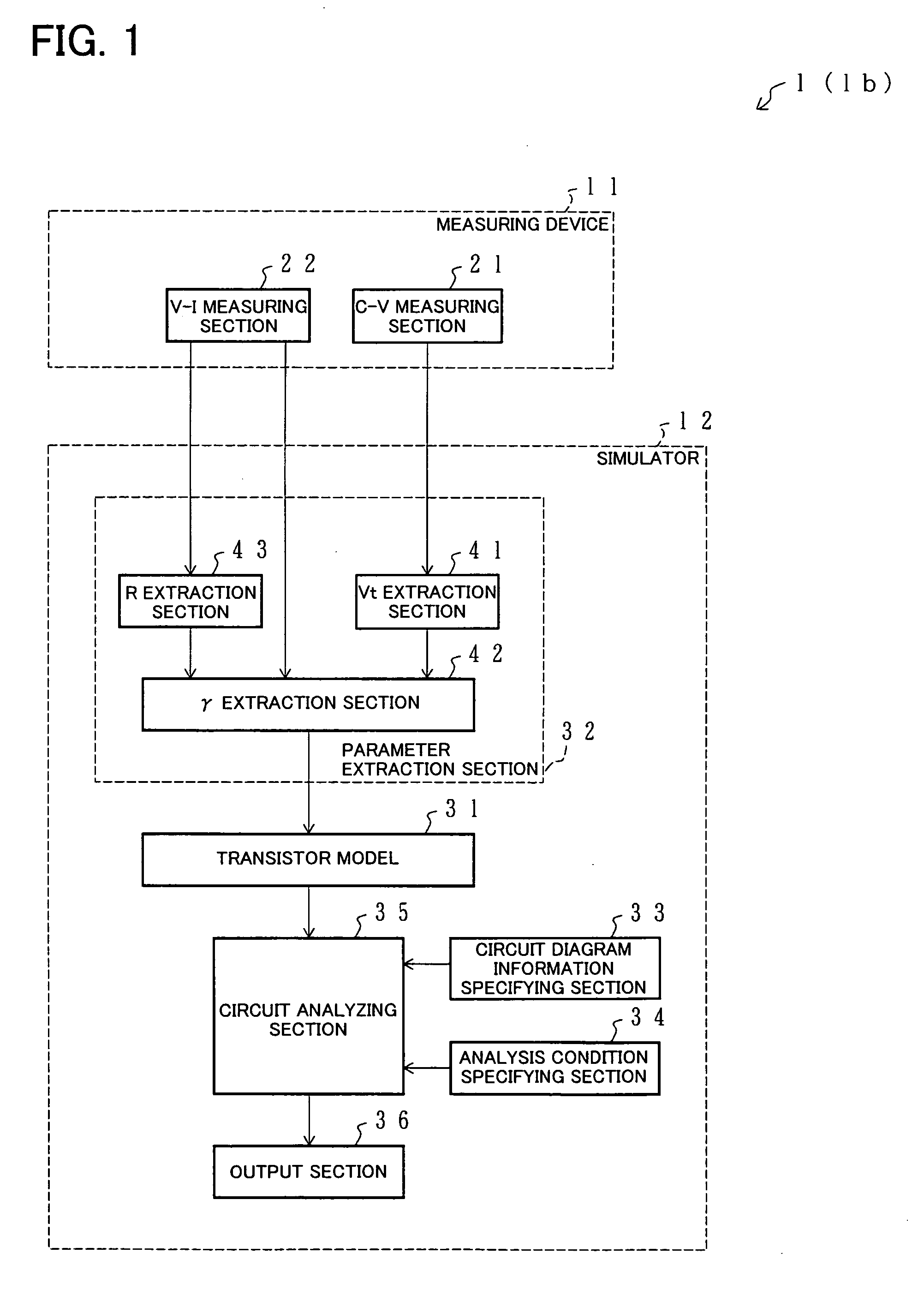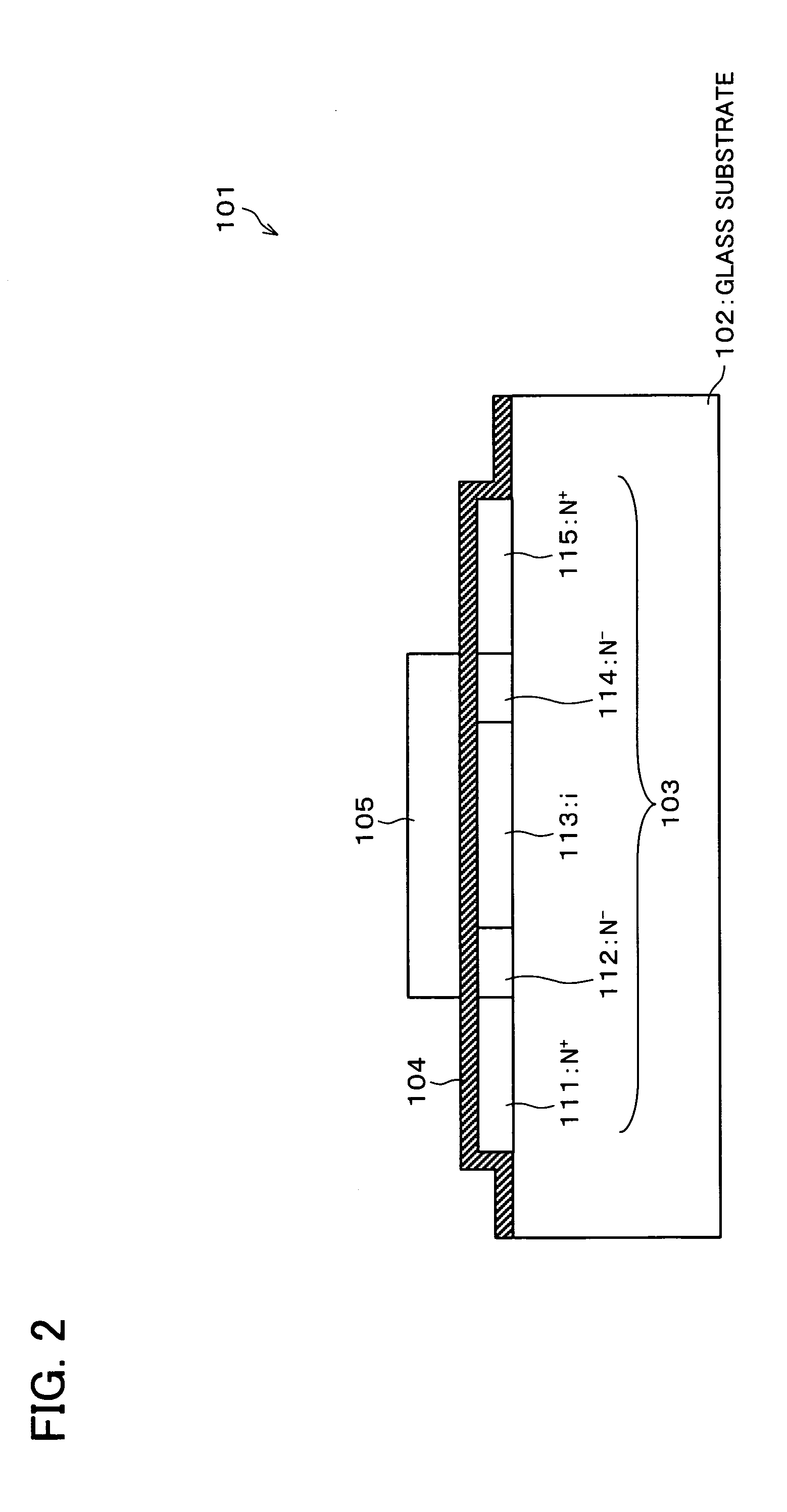Simulator and parameter extraction device for transistor, simulator and parameter extraction method for transistor, and associated computer program and storage medium
a transistor and simulator technology, applied in the field of transistor simulators, can solve the problems of difficult parameter extraction, complex alternative equations, and inability to readily carry out accurate characteristics simulation of transistors, and achieve good fit with capacitance models, high accuracy, and high accuracy
- Summary
- Abstract
- Description
- Claims
- Application Information
AI Technical Summary
Benefits of technology
Problems solved by technology
Method used
Image
Examples
embodiment 1
The following will describe an embodiment of the present invention with reference to FIGS. 1 through 20. A simulation system (simulator) 1 in accordance with the present embodiment is capable of simulate the characteristics of a field effect transistor 2 to high accuracy. The transistor 2 includes regions of different resistance values below its gate section.
The field effect transistor 2 which is a simulation target for the simulation system 1 (“transistor 2”) may be of any structure as long as it has regions of different resistance values below its gate section. The following description will assume, as an example, that the transistor 2 be a thin film transistor fabricated on glass or another insulating substrate.
A thin film transistor 101 includes a thin film (e.g. polycrystalline silicon thin film) formed on an insulating substrate as an active layer, and includes a semiconductor thin film 103 on an insulating substrate 102 with a silicon oxide film (not shown) intervening t...
embodiment 2
So far, the description discussed examples involving three regions of different impurity concentrations below a gate section as shown, for example, in FIG. 2. The number of such regions is not limited to this. For example, four or more regions may be provided as shown in FIG. 21 and FIG. 23.
The present embodiment will deal with more general cases, assuming that n regions of different impurity concentrations (n is an integer more than or equal to 2) are provided below a gate section. In other words, it is assumed that adjacent areas A1 to An of different impurity concentrations were provided below a gate section.
On that assumption, the simulation system 1 in accordance with the present embodiment uses equations (10), (11) below instead of equations (5), (6) above in modeling: Rds=Vd / Id=∑[Li / {(Wi·μi·Coxi)·(Vg-Vti)}]+R(10) =∑[γi / (Vg-Vti)]+R(11)
where Σ is a summation symbol with the index i from 1 to n.
For example, an FET 101c shown in FIG. 21 has a substantially similar struc...
embodiment 3
The present embodiment will describe a simulation system 1b capable of simulating the characteristics of a simulation target transistor 2 to higher accuracy than the first and second embodiments if the transistor 2 is symmetric with respect to the center line of an area functioning as a channel region.
The simulation system 1b in accordance with the present embodiment has a substantially similar structure as the simulation system 1 in FIG. 1. A transistor model 31 however models the transistor 2 with equation (16) instead of equations (5) through (8) and equations (10) through (13):
Rds=Vd / Id=Σ[γi / (Vg−Vti)]+γn / (Vg−Vtn−Vd / 2)+R (16)
where the number of regions is taken as 2n-1, and Σ is a summation symbol with the index i from 1 to 2n-1, except for i=n.
In equation (16), only the term corresponding to an area which is functioning as the channel region and which is an impurity concentration region which is a primary factor of resistance variations between the source section elect...
PUM
 Login to View More
Login to View More Abstract
Description
Claims
Application Information
 Login to View More
Login to View More - R&D
- Intellectual Property
- Life Sciences
- Materials
- Tech Scout
- Unparalleled Data Quality
- Higher Quality Content
- 60% Fewer Hallucinations
Browse by: Latest US Patents, China's latest patents, Technical Efficacy Thesaurus, Application Domain, Technology Topic, Popular Technical Reports.
© 2025 PatSnap. All rights reserved.Legal|Privacy policy|Modern Slavery Act Transparency Statement|Sitemap|About US| Contact US: help@patsnap.com



